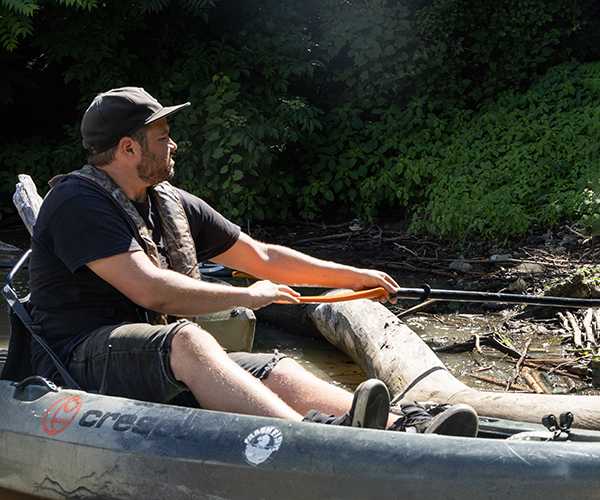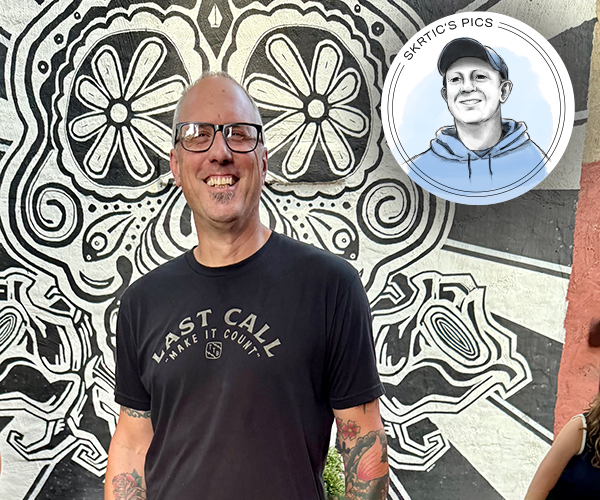hree thousand miles on a bike. Seventeen consecutive days. San Diego to Savannah — The Elite Transcontinental Tour.
I’ve done a lot of challenging things before — I’ve climbed Denali [better known as Mount McKinley] — but I felt all along that this was going to be the hardest thing I’ve ever done, physically, mentally and emotionally.
Charles Barr would get me through this. I’d been trying to convince him to ride it with me — he was a very good athlete, a great cyclist. Then Charles died riding his bike. He was my friend and a fellow Cleveland Orchestra member. When I heard about his death, I immediately knew I was going to do it for him.
I circulated the idea of a Charles Barr Memorial Chair for the orchestra, and eventually it went from “I’m doing this ride for him” to “While I’m at it, I’m going to raise money for this chair.”
I trained like crazy — I rode 4,000 miles in three months last spring, almost 2,000 of them in May alone. I couldn’t stop thinking about Charles.
I put his photo on the bike, taped it on the top tube, a couple of weeks after he died. With the photo there, he rode every mile with me through nine months of training. Every day I could look down there and see him and say, “This is the guy; this is why I’m doing this.”
On the tour one day in Arkansas, I was riding ridiculously steep hills. It was 95 degrees and humid. Sweat was pouring off me; some of the hills were so steep that I had to zigzag across to get up them. “We haven’t had a drop of rain this whole trip — we’ve been lucky,” I said to another guy on the tour. “I wouldn’t mind if it started pouring right now. It’d cool us off a little.”
Not 10 minutes later, the sky darkened and the wind kicked up — so hard that I was barely able to hang on to the bike. And then it came: rain and hail. The temperature dropped from 95 to 60 degrees, just like that. I was freezing.
I remember going up this big, steep, long hill forever and then going down with wind, rain and hail coming at me. I looked down at my speedometer and I was going 52 mph. I was shivering so hard that the bike was shaking. All I could do was think of my daughter and my wife and tell myself, “Hold onto the bike, hold onto the bike.”
The wet brakes weren’t working well and I really couldn’t slow down. I was thinking, If you don’t keep it together here, you’re going to get really hurt. It was a moment of truth — that’s the only time I was really nervous. It was the closest I came to thinking, Should I stop? But quitting was never an option.
Our longest mileage day was 206 miles. It was in Oklahoma — 13.5 hours into a 12 mph headwind. Tough riding. But at the end of that day, riding up to the motel, I had tears in my eyes. From a pretty good distance, I could see Charles’ parents, Eric and Cathy, standing at the base of the motel sign, and my heart nearly busted out of my chest. I just started bawling. I was stinky, filthy, nasty, and his mom just hugged me and hugged me, holding on. That was really very intense and emotional. It was the most emotional moment of the whole trip, even more than finishing the ride.
All during the ride I was thinking that through the newspaper stories and my blog, people would be remembering Charles, thinking about his life. Now that the ride is over, are people going to forget him? I hope not. That’s the great thing about the chair — that will always be there … the Charles Barr Memorial Chair. When I’m old and gray, young orchestra members might come up to me and say, “Who was this Charles Barr guy anyway?” and then I’ll be excited to tell them who he was.
I finally took Charles’ photo off my bike in September. That was not easy. But the ride is over, and he’s in my heart and nothing can touch that; it’s forever. He will always be there. It’s not a photo on a bike that can disintegrate or fade in the sun. Every day he will be there, every day, new.
To make a contribution toward the Charles Barr Memorial Chair, please visit www.ridingforcharles.com.
To make a contribution toward the Charles Barr Memorial Chair, please visit www.ridingforcharles.com.



